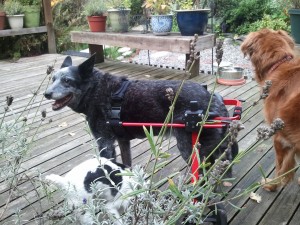According to the folks at Pet Poison Helpline, they talk frequently to terrified pet owners whose dog or cat found an enticing “treat” in a purse or backpack and gobbled it up.
A handbag or similar item lying open with contents exposed can prove an irresistible temptation to a confined, curious and perhaps slightly bored pet.
Top 5 Most Common Purse Items That Poison Pets
1. Human medications. About half the yearly calls to the Pet Poison Helpline are because someone’s pet ingested a medication found in a handbag, book bag, duffel bag, etc. Human pills come in bottles, and the sound of a rattling pill bottle is very similar to the noise some dog toys make.
Both over-the-counter and prescriptions drugs can be a problem. Very common OTC painkillers like Advil, Motrin and Tylenol, and human doses of prescription drugs for depression like Prozac and Effexor, can be toxic to pets.
Non-steroidal anti-inflammatory drugs (NSAIDs) like Advil, Motrin and Aleve, can cause GI ulcers and kidney failure and are especially dangerous for kitties. Just one Tylenol (acetaminophen) can be fatal to cats, and larger amounts can cause liver failure in a dog.
Antidepressants are the No. 1 cause of calls to Pet Poison Helpline relating to prescription medication. Signs a pet has ingested one of these drugs include sedation, loss of coordination, agitation, trembling and seizures.
2. Asthma inhalers. If your dog bites into an asthma inhaler, it has the potential to result in acute, life-threatening poisoning. These inhalers contain highly-concentrated doses of drugs like albuterol (a beta-agonist) and fluticasone (a steroid). If a dog punctures an inhaler by biting or gnawing it, she can be exposed to a massive single dose of a powerful drug which can bring on vomiting, agitation, heart arrhythmia, collapse, and ultimately, death.
3. Artificially-sweetened gum and mints. Many “sugarless” gums and mints contain xylitol, a sugar substitute highly toxic to dogs. Even a small amount of xylitol can result in a dangerous blood sugar crash in canines, and larger amounts can lead to liver failure.
Symptoms of xylitol poisoning include vomiting, weakness, collapse, shaking and seizures. In addition to gum, mints and other sugarless candy, xylitol is commonly found in chewable vitamins, certain prescription drugs, dental hygiene products, nicotine gum and baked goods.
4. Cigarettes, smokeless tobacco, and other products containing nicotine. Did you know a small dog can die from ingesting just three cigarettes, depending on the brand? Chewing tobacco is also toxic to dogs and cats, and so are stop-smoking products like nicotine gum.
Signs of nicotine poisoning come on quickly and include elevated heart and respiratory rates, neurological symptoms, loss of bladder or bowel control, tremors, seizures, paralysis and death.
5. Hand sanitizer. Small bottles of hand sanitizer have become commonplace in purses, briefcases and backpacks. These products, which are used to kill germs, contain lots of alcohol. Alcohol (ethanol) is the germ-killing agent in these gels and liquids.
If your dog were to ingest a small bottle of hand sanitizer, it would be about the equivalent of a shot of hard liquor. This could cause a severe drop in your pet’s blood sugar, loss of coordination, loss of body temperature, nervous system depression, coma, and death.
An Ounce of Prevention
If your family is like most, chances are you can find an open handbag or other carryall bag within reach of your pet right now.
If so, you might want to designate a common surface in your home — close to the front door — as the “bag drop-off area.” It should be high enough that its contents don’t draw your dog’s attention.
If you have a curious cat, then the requirement should be that all bags are zippered or snapped closed before leaving them in the “bag drop-off area.”
Another option would be to create a “bag-hanging area” by installing pegs, coat hooks or similar heavy-duty hangers close to the front door, and assigning one to each member of the family.
Dr. Karen Becker is a proactive and integrative wellness veterinarian. You can visit her site at: MercolaHealthyPets.com.
Her goal is to help you create wellness in order to prevent illness in the lives of your pets. This proactive approach seeks to save you and your pet from unnecessary stress and suffering by identifying and removing health obstacles even before disease occurs. Unfortunately, most veterinarians in the United States are trained to be reactive. They wait for symptoms to occur, and often treat those symptoms without addressing the root cause.
By reading Dr. Becker’s information, you’ll learn how to make impactful, consistent lifestyle choices to improve your pet’s quality of life.




